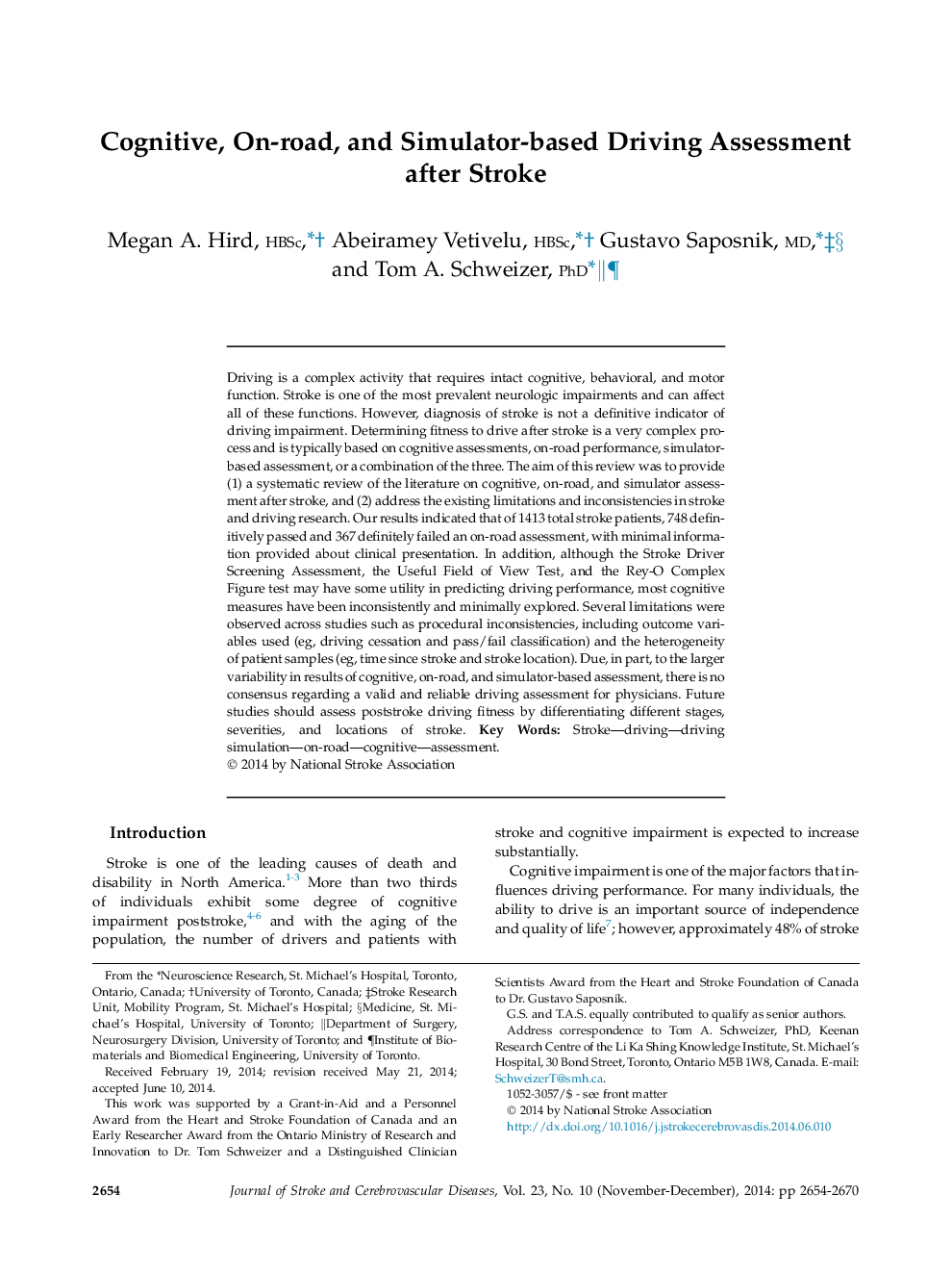| کد مقاله | کد نشریه | سال انتشار | مقاله انگلیسی | نسخه تمام متن |
|---|---|---|---|---|
| 5874058 | 1144665 | 2014 | 17 صفحه PDF | دانلود رایگان |
Driving is a complex activity that requires intact cognitive, behavioral, and motor function. Stroke is one of the most prevalent neurologic impairments and can affect all of these functions. However, diagnosis of stroke is not a definitive indicator of driving impairment. Determining fitness to drive after stroke is a very complex process and is typically based on cognitive assessments, on-road performance, simulator-based assessment, or a combination of the three. The aim of this review was to provide (1) a systematic review of the literature on cognitive, on-road, and simulator assessment after stroke, and (2) address the existing limitations and inconsistencies in stroke and driving research. Our results indicated that of 1413 total stroke patients, 748 definitively passed and 367 definitely failed an on-road assessment, with minimal information provided about clinical presentation. In addition, although the Stroke Driver Screening Assessment, the Useful Field of View Test, and the Rey-O Complex Figure test may have some utility in predicting driving performance, most cognitive measures have been inconsistently and minimally explored. Several limitations were observed across studies such as procedural inconsistencies, including outcome variables used (eg, driving cessation and pass/fail classification) and the heterogeneity of patient samples (eg, time since stroke and stroke location). Due, in part, to the larger variability in results of cognitive, on-road, and simulator-based assessment, there is no consensus regarding a valid and reliable driving assessment for physicians. Future studies should assess poststroke driving fitness by differentiating different stages, severities, and locations of stroke.
Journal: Journal of Stroke and Cerebrovascular Diseases - Volume 23, Issue 10, NovemberâDecember 2014, Pages 2654-2670
